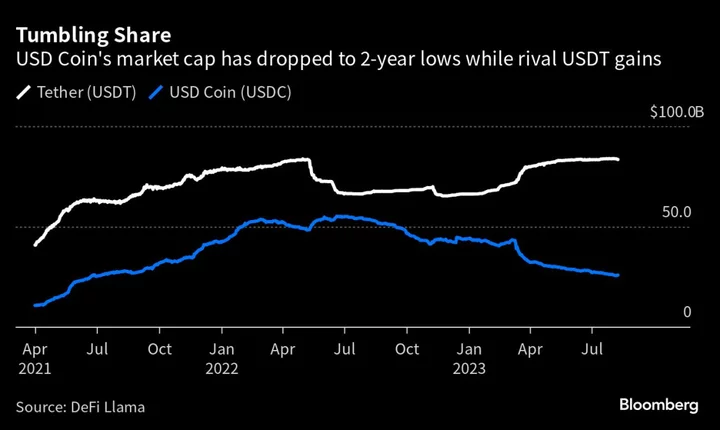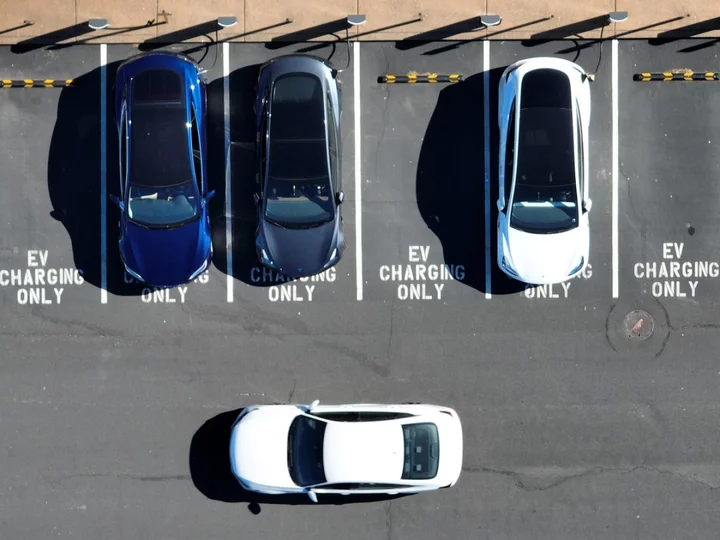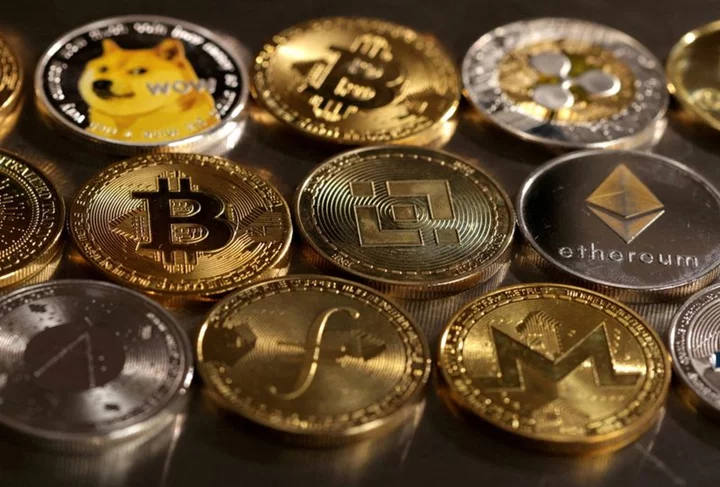Circle Internet Financial is counting on a more than $1 billion cash cushion to help weather fresh competition from non-crypto companies such as PayPal Holdings Inc. while it seeks to stem a deepening decline in the market share of the second-largest stablecoin.
The amount of Circle’s USD Coin in circulation has plunged to about $26 billion from $45 billion at the beginning of the year. Tether, the biggest stablecoin, has grown during the same period. The decline is being partly driven by a decision about a year ago by the world’s biggest crypto exchange, Binance, to pull back from using USD Coin to drive usage of its own token, Jeremy Allaire, chief executive officer of Circle, said in an interview with Bloomberg News.
Stablecoins — crypto tokens that are pegged to an asset like the dollar — are mostly used by traders to move digital assets between exchanges and have so far made limited inroads into consumer payments. Investors began to lose confidence in the sector last year in the aftermath of a market collapse spurred in part by several industry scandals. In March, Circle revealed that it had $3.3 billion exposure to the collapsed Silicon Valley Bank, triggering a brief depeg of USD Coin.
“We were meaningfully generating cash,” Allaire said. He acknowledges that a series of “tail-risk events” in the crypto industry have affected the adoption of USD Coin. “The Terra collapse helped us; the Binance forced-conversion hurt us. The FTX collapse sort of helped us, and then the failure of regional banks hurt us.”
Circle generates most of its revenue through interest income from assets backing the stablecoin, such as dollar deposits and short-term Treasuries, making it a beneficiary of rising interest rates.
Circle had $779 million in revenue in the first half of the year, already surpassing the $772 million for all of 2022. The private firm generated $219 million in adjusted earnings before interest, taxes, depreciation, and amortization in the first half, also outpacing the $150 million for all of last year. The company has over $1 billion in cash on its balance sheet as of June.
“That’s significantly more than we had expected, and allows us to have a lot of staying power as a company to invest, build out major new revenue streams, build on major new products, and execute global international expansion profitably,” Allaire said.
Allaire, who founded Circle in 2013 after running other tech companies, said he’s betting on a future with mainstream adoption of stablecoins as the money for the age of the internet. This week’s announcement by PayPal is just the beginning of it, he said.
“I expect you will see many many, not just internet payments firms, but also all kinds of financial services companies and others begin to get more involved in this,” he said. “It’s great to have this new competition - I do think it’s going to drive more and more companies into the field.”
Competition is increasing even as the overall market value of the sector shrinks. The sector has long been the subject of criticism that the companies involved don’t provide sufficient transparency through traditional means such as audits.
Circle plans to share financial reports on an ongoing basis and has hired Deloitte as an auditor. Allaire said the company is voluntarily disclosing the information after its terminated planned merger with special purpose acquisition company Concord Acquisition Corp.
Circle is actively working on partnerships to push for greater adoption of USD Coin. Allaire said the firm doesn’t plan to provide so-called white-label solutions, which is to issue stablecoins under the name of a partner, a model that rival Paxos Trust Co. has adopted in its issuance of PayPal USD.
Even when the Federal Reserve eventually pivots to lower interest rates, Allaire expects Circle to benefit since low-rate environment tends to drive more crypto activities.
“Declining rates would actually be good for Circle,” he said. And Circle is expanding revenue sources, most recently launching a crypto wallet service after acquiring CYBAVO in 2022.
As for the myriad of stablecoins in the market, Allaire predicted many will not exist in the long term, given global regulators’ tightening control over stablecoins. On Tuesday, the Federal Reserve released guidance on banks for their digital assets activities, including any issuance of stablecoins. Last month, the House Financial Services Committee advanced a bill to regulate stablecoins. Meanwhile, in Europe, stablecoin issuers have been told to start preparing for 2024 European Union rules.
“Companies and entities that can’t meet those standards - those financial integrity standards, those operational, risk management standards - they will not be able to operate,” he said. “My belief is that over the next two years, those players that cannot meet the standards will be crowded out of the mainstream market.”
--With assistance from Olga Kharif.









